Nishiki Market History
The Nishiki Market started with humble beginnings in the early 1300’s as a fish market which relied on the freezing water underground to keep the meats fresh. Over time, the stalls along this 400-meter shotengai (shopping street) have slowly evolved like the lifespan of a coral reef over decades and even centuries. While some shops have come and gone, others such as Aritsugu founded by a master swordsmith has been firmly planted in the arcade since 1560. It’s younger counterpart Tsunoki, has been selling premium sake, shochu, and Japanese whisky for 8 generations over 200 years. That’s incredible considering the United States of America was founded around the same time.
What to eat at the Nishiki Market?
This market has been around for so long, that it feels as though every shop has been carefully curated, much like natural selection. Only the best of the best get to stay around on the fixed stretch between Takakura and Shinkyogoku Street. While you may see multiple vendors selling similar items such as seafood, you will be hard pressed to find more than two vendors specializing in the same items. This is one of the aspects I appreciate most about this market; you can walk the entire stretch and avoid repetitive goods. We’ve all been there before– some markets can seem like deja vu, but this one is far from it.
1. Mentaiko Tsukemen with Tomato-based Mentaiko Dipping Broth
Google Map Location (note this one is a little off on the map; it is located across from the Snoopy Cha-Ya store)
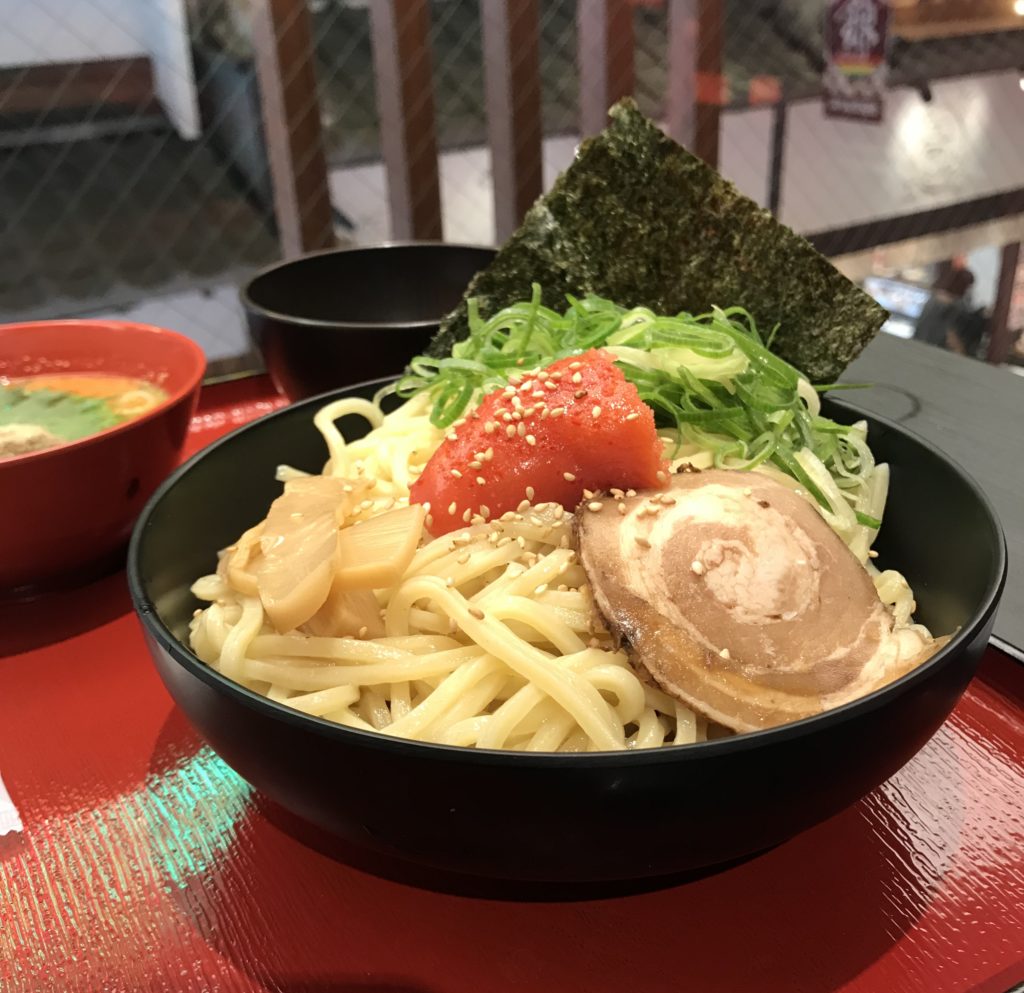
Tsukemen is a ramen-style that was introduced from Tokyo in the 1960s and has since become quite popular. Mentaiko is spicy pollack (cod) roe and is easily identifiable by its reddish/pinkish hue. It’s about the same size as a slice of maguro (tuna) sashimi and is delicious with just about anything. It’s often found in an onigiri (rice ball), but in this case, you can have it on top of your tsukemen and in a tomato-based dipping broth. This dynamite combination is highly creative and hard to come by! Oh, and if you really like mentaiko you can also buy one of their smiling lumpy stuffed animals here too.
2. Uchida Tsukemono
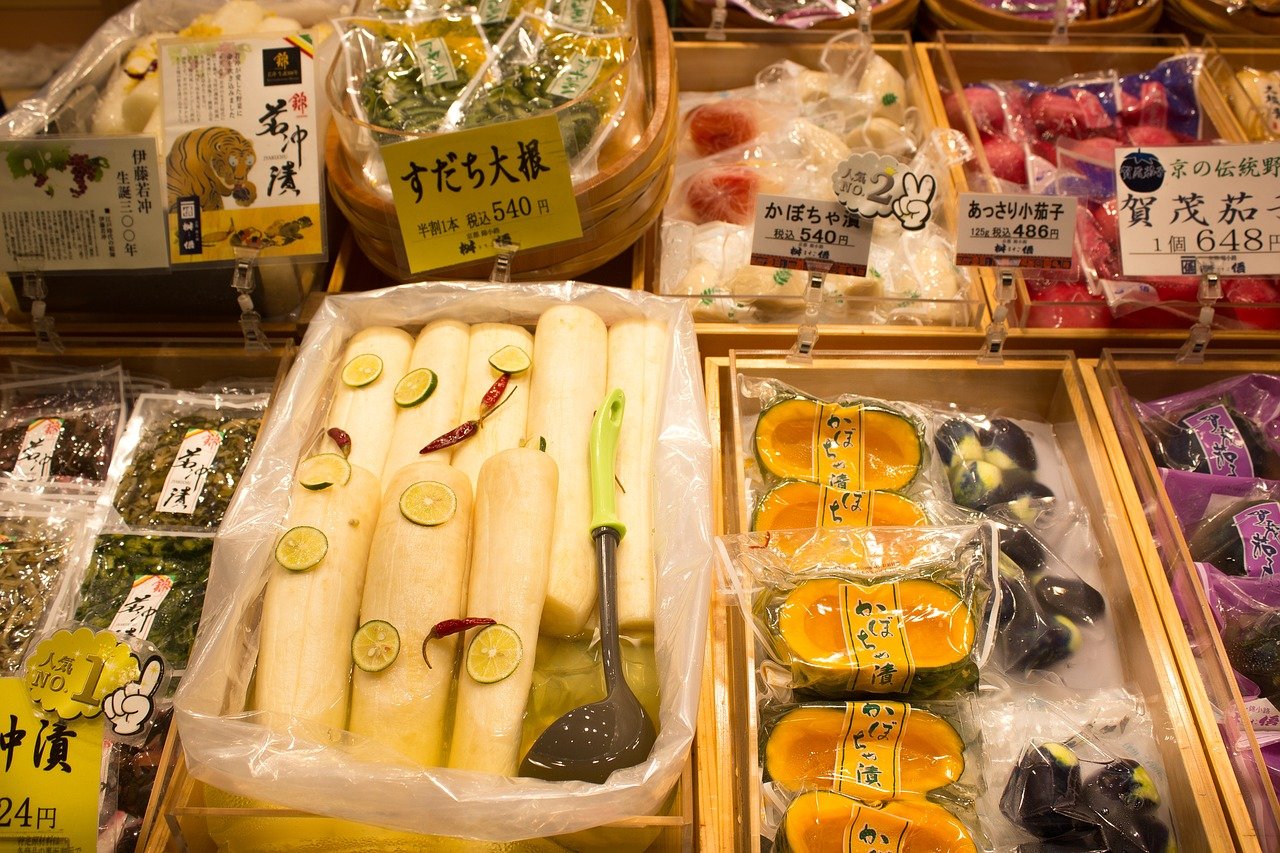
Tsukemono (pickled vegetables) is a meal staple in Japan. Uchida’s pickle shop is easily identifiable by its large wooden barrels of pickled goods with it’s vertical red and yellow signs. I find Japanese pickles are easy to like (the flavor profiles are generally mild) and most delicious when paired with a simple bowl of rice.
3. Hamo (Pike Conger) Tempura
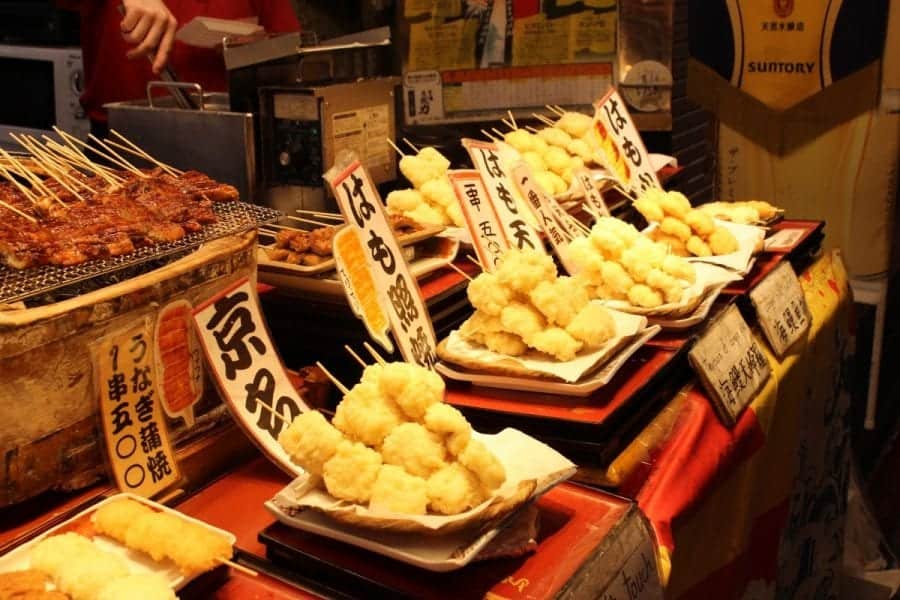
Nothing makes me happier than seeing people take their jobs seriously. Especially when it comes to food. The guy that mans the street side stall at Uoriki expects you to be fully ready to order by the time you get to the front of the line. If you hesitate, don’t be surprised if he sternly prompts you and then moves onto the next person. Try the hamo (pike conger) and other delectable fish, deep fried right in front of your eyes.
4. Konna Monja
For those with a sweet tooth, you must try these little bites of tofu heaven at Konna Monja. They sell a variety of items including tofu ice cream and cream croquettes, but the real star is their crispy tofu donut. You’ll know you’ve come to the right place when you see a swarm of people lining up around the corner off of the main street. The reward for getting to the front of the line is catching a glimpse of the micro donuts that are getting cranked out on the conveyor belt, hot and ready for consumption.
Bonus:
Kidoairaku Pottery Shop
If you’re looking for handmade pottery, Kidoairaku is a wonderful place to find a unique gift or souvenir. You can see pottery being made in its various life stages all over the store, including a drying rack that hangs from the ceiling. They also set up a table along the shotengai with a wide selection for sake tasting. Stop in for a cup of sake and peruse the beautiful handicrafts.
Aritsugu
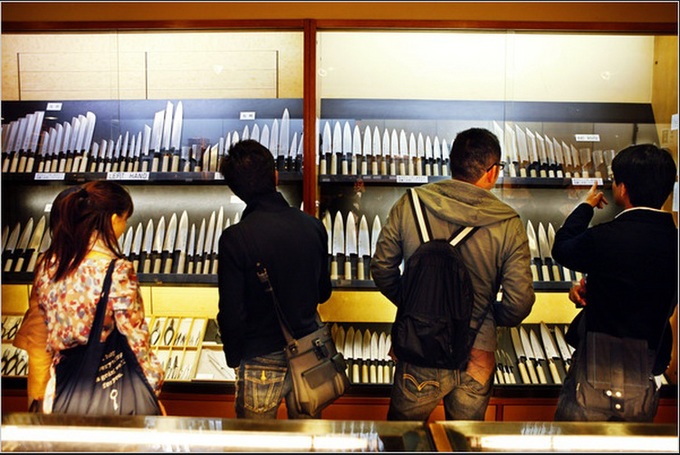
Aritsugu sells hand-crafted knives and has been a fixture in the market since 1560. It was founded by a master swordsmith named Aritsugu Fujiwara and known for its knives made from traditional steel. This brand is overwhelmingly popular in western Japan, which is a testament to its quality and rich history. These days, the shop is led by the 18th generation of store owners.



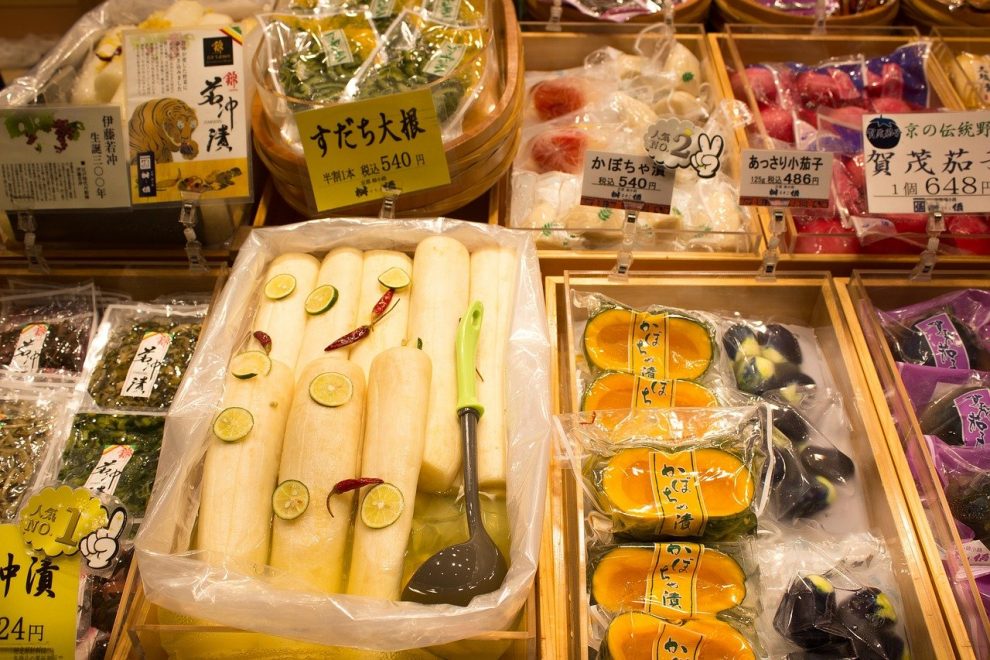



Add Comment